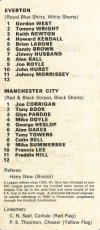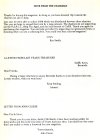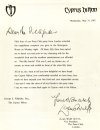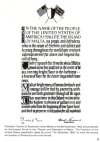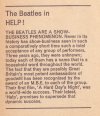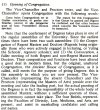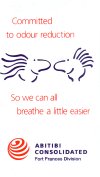 |
Introduction to the study of language |
IntroductionThis guide is written for students who are following GCE Advanced level (AS and A2) syllabuses in English Language. This resource may also be of general interest to language students on university degree courses, trainee teachers and anyone with a general interest in language science. Please look at the contents page for a full list of specific guides on this site. What the exam board saysExam board introduction"The aim of this module is to introduce candidates to ways of investigating and understanding better the diversity of uses and contexts for spoken and written English in the modern world and in their own lives. Candidates' proficiency in responding to uses of language in this module will be tested through their understanding of the essential roles of purposes and contexts in language use; the importance of audiences; the diversity of choices available in structure and style, and the significance of these factors in constructing meanings. This investigation of language requires the systematic application of the following descriptive frameworks to texts: lexical, grammatical (word, sentence and text level), phonological, semantic and pragmatic. These concepts and descriptive approaches together provide systematic frameworks in which candidates may learn about the nature and functions of language." Assessment objectivesThis module requires candidates to
ContentThis module will introduce students to the central concepts described below, and to the elements of language study necessary for them to be able to identify, describe and discuss language in use (both spoken and written) on a systematic basis. This encompasses the variation in language in relation to variation in audiences, purposes and contexts. Five related concepts form the basis of study for this module.
The following descriptions of language will enable students to identify and discuss both the language system and its diverse uses and expressions.
Mode of assessment
Concepts explainedThis guide contains only brief introductions. Most of these concepts I have explained more fully in detailed and extensive guides. You will find these listed on the contents page IdiolectIn short, this is the language system of an individual speaker. The Greek prefix idio(s) refers to that which is private. It is related, etymologically (=in its origins), to the common noun idiot, but this is perhaps not helpful. More helpfully, it occurs also in idiom and idiosyncrasy. The reasons why individuals use language as we do are many and complex. And idiolects change over time. It is relatively easy to show that people may adapt their language use to a new environment or language fashion. It is also possible to show that individual differences are marked almost as clearly as a fingerprint. Before the trial (in 1997 and 1998) of Theodore Kaczynski, the so-called "Unabomber", Don Foster (a professor of literature) was asked to help the defence, by showing that the FBI's comparison of Kaczynski's and the bomber's writings had failed to establish "probable cause" for their search of Kaczynski's home. Foster's task, had he accepted it, would have been to discredit the FBI's Special Agent, James Fitzgerald, and argue that Fitzgerald had not shown the likelihood of common authorship. As soon as he compared Kaczynski's writing with the Unabomber letters, Foster became convinced that he was the same person. Don Foster eventually appeared as a witness for the prosecution. His work did not, in Foster's own judgement, materially help convict Ted Kaczynski: once the FBI searched Kaczynski's home, they found bomb-making equipment which made the rest of their task easy. Foster has written about his work in Author Unknown: on the trail of Anonymous, ISBN 0805068120. Though he does not labour the point, Foster's account reflects discreditably on Robin Lakoff, the celebrated linguist from the University of California at Berkeley. She DID appear for the defence, and made submissions against Foster's detailed expert-witness commentary for the prosecution, as well as a rebuttal of Fitzgerald's original comparison. In her second submission for the defence, Professor Lakoff declared that she had read only two of hundreds of writings (the Unabomber's manifesto and a 1971 essay by Ted Kaczynski). Foster, who was appearing as an expert witness for the first time, like Fitzgerald in the original FBI analysis, studied hundreds of documents from Kaczynski and the bomber (we can now say from the same person). On May 23, 1997, the judge, Garland Burrell refused the defence submission. In giving his judicial opinion, Judge Burrell quoted Foster's expert testimony. How often does a court decide a dispute, not about language (which happens all the time) but about forensic linguistics? The reason why the FBI turned to Don Foster (perhaps the only reason why they knew of him) was that he had, early in 1996, used a close analysis of internal textual evidence to solve a riddle - who was the author, named on the book jacket as "Anonymous", of the satirical political novel Primary Colours, which satirizes Bill Clinton's 1992 presidential campaign? Foster correctly identified "Anonymous" as Joe Klein, supporting his identification with persuasive evidence, and in the teeth of initial denials. (Klein has now admitted to his authorship.) Solving the riddle made Foster something of a celebrity. FBI agent Terry D. Turchie's affidavit supporting the US government's request for a search warrant contains a summary of James Fitzgerald's comparison - go to section IV D, paragraph 108. The affidavit and Don Foster's declaration to the court, in support of Fitzgerald's findings can both be found on the Web at www.unabombertrial.com. Fitzgerald's original comparison (an internal FBI document) is now on the Web, too. Use the links below to go straight to each document.
You can find more on the Unabomber case (and other examples of forensic linguistics) on Katherine Ramsland's Web pages on Literary Forensics. Click on the links below to go to the page you want:
For a very good study of idiolect, read Professor Crystal's section on Personal Variation in the Cambridge Encyclopedia of English Language or that on Language and Identity in his Encyclopedia of Language. Teachers and students can readily study some individual features of language use by people you know in common - for example the frequency with which a given lexical item appears. (I had a colleague who would habitually qualify one or more verbs and nouns per sentence with "actual" and "actually". What is more interesting is the frequency with which other speakers would do the same, depending on how recently they had been in her company.) It is easy enough to study individual language use by a public figure, whose speech is broadcast on radio and TV. One very entertaining way to do this is by comparing a mimic or impressionist with his or her subjects. Rory Bremner, for example (a UK comedian and mimic) often comments on the nuances (quirks or individual features) of people whom he imitates. DialectDialects are language varieties where grammar and vocabulary identify the regional and social background of the user. Some language scientists will include features of phonology in the description of a dialect. On the other hand, you should not confuse dialect with accent, which is (relatively) a much simpler and narrower feature of spoken language. Dialect is, like many other areas of variation, subject to change over time. SociolectSociolects are language varieties that reflect social background, in terms of such things as occupation, education and social class. You can see how any one person's idiolect might contain features of both dialectal and sociolectal variation, as well as more individual differences. Language descriptions explainedThis guide contains only brief introductions. Most of these concepts I have explained more fully in detailed and extensive guides. You will find these listed on the contents page LexisThe affixes lex- and -lect both derive from the Greek verb lego (="to say"), which gives the related qualifier lexicos (="of words") and the noun lexicon (="collection of words"). Lexis is a description of words and word elements (or morphemes) in language. It is also used as a shorthand for the study of the lexicon. Lexicographers produce reference works, such as dictionaries, while lexicologists study the lexicon historically and in the present day. For most students, lexicology will be an important area of study. This subject occupies Part II of David Crystal's Encyclopedia of the English Language. GrammarThis is almost impossible to describe briefly, but grammar can be seen as the rules (or a systematic account of these rules) that govern language in general and specific languages. For English, they include such things as semantics and phonology. They are not "invented" or prescriptive rules but rules observed in the ways language works in practice. Grammar is the subject of Part III of Professor Crystal's Encyclopedia of the English Language . For my short guide see: PhonologyPhonology is the study of the sound systems of languages. For the student (and the teacher), this area of study poses some special problems.
Phonology is treated at some length in section 17 (The Sound System) of David Crystal's Encyclopedia of the English Language. SemanticsSemantics is the study of meaning in language. It is explained in detail in section 11 (The structure of the lexicon) of Professor Crystal's Encyclopedia of the English Language. For my short guide, see: PragmaticsPragmatics is a systematic way of explaining language use in context. It seeks to explain aspects of meaning which cannot be found in the plain sense of words or structures, as explained by semantics. As a field of language study, pragmatics is fairly new. Its origins lie in philosophy of language and the American philosophical school of pragmatism. As a discipline within language science, its roots lie in the work of (Herbert) Paul Grice on conversational implicature and the cooperative principle, and on the work of Stephen Levinson, Penelope Brown and Geoff Leech on politeness. Pragmatics includes such things as speech act theory and conversational maxims, the politeness principle, face and politeness strategies and phatic tokens. For a more detailed account of these things, see my guide to pragmatics and speech acts, at: There is a clear introduction to pragmatics in Jackson's and Stockwell's, Introduction to the Nature and Functions of Language, section 6.1. We can illustrate how pragmatics works by an example from association football (and other field sports). It often happens that a team-mate will shout at me: "Man on!" Semantic analysis can only go so far with this phrase.
None of this explains the meaning in the context of the football game. This is very complex, but perhaps includes at least the following elements:
If this is right (or even part of it), it is clear that my team-mate could not, in the time available, (that is, before the opponent tackles me) communicate this information in the explicit manner above. But it also relies on my knowing the methods of language interchange in football. "Man on" is an established form of warning. For all I know, professional players may have their own covert forms, as when they signal a routine at a free kick, corner or throw-in, by calling a number or other code word. Also, though my team-mate is giving me information, in the context of the game, he is chiefly concerned about my taking the right action. If response to the alert becomes like a conditioned reflex (I hear the warning and at once lay the ball off or pass), then my contribution to the team effort will be improved. (Reflection on how I play the game is fine after the match, but not helpful at moments when I have to take action.) Note also, that though I have assumed this to be in a game played by men, the phrase "Man on" is used equally in mixed-gender and women's sports - I have heard it frequently in games of field hockey, where the "Man" about to be "on" was a female player. "Woman on" would be inefficient (extra syllable and a difficult intial "w" sound), and might even lead the uncritical player to worry less about the approaching tackle - though probably not more than once. Guides which support this moduleThis is a brief introduction. Please make use of the more detailed guides which are appropriate to work on this module.
Before the exam - ideas for teachingMaking collections of example texts | Collecting texts | Saving and reproducing the texts | Organizing the data into collections | Organizing comments on a grid | Example grid | Using a grid | Creating records in a database Making collections of example textsIn one sense this is a very easy thing to do - since any text could be used. The challenge for you as a teacher may be in some of these things:
For some kinds of work, you may wish to make photocopies of texts (having regard for laws of copyright). But for collaborative work, it may be better to scan a document to produce a digital data file, or use word processing software to create a transcript of a spoken text. While you may wish to manage this collection, you should also encourage students to contribute to it, in various ways. This will include collecting, saving and adapting and organizing the texts. Collecting textsAll of us have opportunities to acquire texts in the course of our everyday lives - for example:
These are just general examples. But a group of students will, collectively, be able to find texts that range more widely in terms of their provenance, whether in social or geographical terms, or in the time period that they cover. And if they do more of the work, this frees the teacher's time for other things. Saving and reproducing the textsIf each student in a group makes one recording of a spoken text, and transcribes this, then he or she learns about the conventions of transcribing. But the resulting transcript can go into a collection, that will quickly grow, and be useful for all sorts of purposes. If the original speakers give their assent, then any text can be shared both as a digital audio file, and a text or document file. Broadcast and print texts may be subject to copyright, so that you may only store them for a brief period. But within the permissions allowed by Fair Use (USA) or Fair Dealing (UK) provisions, you can make copies of things for your own use - if you don't make multiple copies and if the copying has no significant economic effect on the owner of the copyright. It is easy to scan a document and share it as an image file and/or adapt it as a text file (using optical character recognition software). It is so easy, that you can do this as and when you need, and discard the files after use. This method is ideal where you have the use of a data projector in a classroom, or are using Internet or other network technologies for remote or distributed learning. If you are working with older technology, then you can still scan, print onto transparent media for overhead projectors - then project these transparencies in the classroom.
For some texts there are no problems of copyright - because you own the document, or are using a document where copyright has expired or which is in the public domain with permission for you to reproduce it. You may wish to share such texts by placing them on a network (public or private) with hyperlinks to allow users to open them or save them to a local computer or other device. Organizing the data into collections or selectionsAs your collection of sample data grows, then you may wish to think about how you will organize it. The way you do so may help you to produce samples like those that examiners give to students. If the examiners should change this, or if you are using the texts in some other way than exactly replicating the exam task, then you can make different kinds of collection - and provide these to students as hard (print) copy or digital data files for use with personal computers and other intelligent devices. Organizing comments on a gridOne way to help you think of the range of possible categories into which texts could be placed is to use a grid to survey the texts in front of you. Obviously, you should let the texts help you decide the possible range of groupings, but this list (based on a range arrived at by Stubbs and Hudson) is a starting point. These are not rigid categories. A text may have features that only place it partially in a particular category. Example gridYou can see an example of such a grid by clicking on the links below. The data file is available as a rich text format (.rtf) document, a Microsoft Word (.doc) document and in portable document format (.pdf). Choose the file format that is most convenient.
Using a gridHere are some possible tasks:
If you have any problems with these tasks, then ask for guidance from your teacher or other language expert. Creating records in a databaseUsing a two dimensional grid is a very basic and rather limiting way to organize descriptions. And in an exam, candidates will normally find themselves writing a linear explanation. A better approach, if the students have the use of a computer, is to use a flat-file database, and make a record for each text. In this case, there will be separate fields for each logical category of description. So, for example, there would be one field for the medium of transmission: spoken, written, signed or other/mixed. Another field could be used to show the level of formality on a continuum, while another could show information about the audience, purpose or context of utterance. Teaching and learning pointsThis guidance is written for teachers. If you are a student, you may still find it useful - perhaps as a suggestion for your teacher, or you may see how this guidance applies to your own revision.
What follows is a list of some of the things that might be covered in preparation for this unit. It is not intended to be exhaustive:
Preparing for the examSome general points | Time-keeping | How to do task 1 | Some ways to group and link texts | Unhelpful and helpful approaches | How to do Task 2 | Things that earn low marks | Things that earn high marks Here are some suggestions for ways to approach this exam paper. There are other ways to do well - don't regard these as a prescription. Some general points
Time-keepingYou need to be very strict in your use of time. This comes with practice, but here is a possible way to do it. Spend
How to do Task 1Here you have to discuss ways of grouping different texts together. You also have to consider the problems and difficulties of putting texts into categories. Many areas of academic study use systems of classification - this is sometimes known as taxonomy (Greek for "law of classification"). The best-known example is probably the classification of living things into a hierarchy of categories that start with kingdoms (animals and plants) and end in phylum, genus, species and sub-species. You are going to place some texts that you see for the first time in an exam, into categories that you should be aware of long before the exam. You should have
The examiners will choose texts that challenge easy assumptions about putting them in categories. You need to respond by showing understanding of the difficulties in grouping them together. When considering how to link the texts you should refer to the data. If you don't do this, the examiners will not reward theoretical, abstract and generalised discussions. You should realise that the first bullet point instruction ("Compare these texts and discuss how they can be categorized and grouped") is complex: responding to it with a couple of sentences before discussing the two selected groups will significantly limit the mark that you can achieve. There are clearly lots of ways in which to group texts. You need to have access to a range of approaches and must also be able to discuss the similarities, differences and problems presented by placing texts in categories. Some groupings may be accurate but only allow limited further linguistic comment. For example, to say that three of the texts were written since 1990 may be true. But there is not much that you can usefully say to develop that. Very broad groupings (such as spoken texts or written texts) will lead to oversimplified comments based on everyday awareness and not on the evidence of the texts. For example, you may assume that because a text is spoken it is necessarily informal, even when the text in question is a planned speech for a formal occasion. Some texts may combine features of formality and informality and so resist classification in just one of these groups. Can you show that you see these things?
Exploring or making clear these subtle or complex features of classification will help you earn higher marks. Any text will belong in more than one category. Within any group where you place texts, there will be texts that differ from each other. Some ways to link and group textsThe exam specification outlines idiolect, dialect and sociolect as the content for Module 1. When you look at the texts, try to see and explain the problems of categorizing them in terms of these descriptions of language. Here are some features of texts that may suggest ways of grouping them:
Unhelpful and helpful approachesWhat's the good of telling you things not to do? None whatsoever, unless you can use these to work out the things that you should do. Here is some advice of both kinds.
How to do Task 2You must write about three texts, one of which you will choose from the two specified for you. You will be penalised if you write about both specified texts (or about neither text). This task requires a more straightforward analysis of the texts and a suggested framework will be provided. There is no requirement for you to compare the texts in Task 2. There is no requirement to write about all of the language features given in the framework for each of the three texts you choose: the instruction uses the wording "some of the following frameworks where appropriate". You should decide which features are relevant in relation to the context and concentrate on those. Don't use up your time in trying to find something to say about a feature that is not important or writing about something that is not there. The examiners will tell you specifically what to look for in your analysis. In language study there is a sort of hierarchy of the features of a text about which you might comment. That is, some comments will be worth more marks, because they will show a deeper understanding of the way the text works, and what are its stylistic features.
Here are some examples Things that earn low marks
Clearly all of the above could be developed into some sophisticated analysis, which could be rewarded highly. So make sure that you do develop them. Things that earn higher marksComment on
TerminologyDo you need to use a special technical lexicon? It is possible for linguists, like anyone else, to use special lexis unnecessarily, or to descend into a kind of jargon. But language science, like natural science, uses a technical vocabulary to name things and processes - from the physical organs of speech, to the sounds of English and on to theories of social implications of language use. You cannot get by with a vague use of everyday or common-sense English for this, any more than you can explain molecular chemistry by referring to salt rather than sodium chloride. You should use the appropriate terminology in order to analyse the texts and write about them (this is explained in Assessment Objectives 1, 3 and 4). But you will also not do well if you simply use lots of technical terms with limited explanation. You also need to give examples (from real use - not things you have made up). You must understand and be comfortable with the terminology you are using - many grade A answers do not need to contain sophisticated metalanguage (language about language). But they do need language that is appropriate and relevant to the ideas it explains. You need to show the examiners that you understand how to use this technical or specialized lexis. Models and frameworksThe examiners expect you to use what they call frameworks - abstract ways of representing or modelling language. One of the assessment objectives (AO3) requires you to use such models. But you should beware of doing so mechanically. It is important to stand back, metaphorically, from a text, and see it whole. If you use a framework or other model to suggest things on which to comment, then make sure that you relate them to their context. The specific, individual features that you look at may work together to create a coherent and consistent text. And that text arises out of a context (Assessment Objective 5) - which connects the purposes of the author to the audience, and to the way it receives the text. Don't lose sight of the "big picture". OverallYou need to be equipped to think about and explore a whole variety of texts. Be prepared to think about texts in terms of similarity and difference and have an understanding of a range of features through which connections might be made. Think about how texts work in the 'real world' and understand that context is hugely important to the meanings we can take from a text (AO5). This paper rewards thinking:
Standard tasks for examsInstructions | Information | Advice | Question 1 | Question 2 These example questions are based on recent module papers. The task descriptions appear first, followed by the example texts (complete short texts or extracts from longer texts). I have not shown the text of the examples, as teachers may use the past papers for practice or "mock" exams in school. Alternatively, teachers can retain the first two pages of the paper, and simply substitute other examples. I have also included a collection of texts that you may wish to use. Click here to see these examples. I have made a collection of twenty example texts for this guide - you may use these to make smaller selections for practise at categorizing and commenting on unfamiliar texts. The range of possible language data for this module is practically infinite. Students cannot possible guess what will appear, so you must have a framework or method that will enable you to cope with any texts that examiners choose in the future. My comments and any extra information appear below in blue type: Outside front cover - this section contains essential information and guidance, sometimes known as the "rubric". You can usually see it before the exam starts. The questions are inside, and you are not allowed to see this before the exam begins. Time allowed: 1 hour 30 minutes Instructions
Information
Advice
Inside front cover (first page of the questions proper).Answer both questions. This means that the questions, being of equal value, deserve equal amounts of time. There may be some overlapping of information. You should certainly make some notes or outline plans for both questions, as you will be looking closely at the example data for each, and may see things useful for either question. Question 11. Study the texts A-H on the next six pages. These extracts illustrate different varieties of language use.
Question 2Taking either text G or text H and any other two texts, analyse some of the language features of these texts and explain how these are affected by context. Use some of the following language frameworks where appropriate:
Texts from past assessment papersJune 2001 | January 2002 | May 2002 | January 2003 June 2001 examText AExtract from a vegetarian recipe book called The Enchanted Broccoli Forest, published in the USA in 1982. Text BThe back of a ticket for the London Underground. Text CExtract from a book about English accents and dialects with an accompanying tape: the transcript of the recording of the sample from Devon. The speaker on the recording is a farmer in his fifties, talking about various aspects of farming and rural life. Text DA letter sent to people staying in a hotel in the Portuguese speaking island of Madeira after their stay had been disrupted by building work. Text EFrom a transcript of a conversation between two secondary school students and a teacher: "Alan and Asif are in detention for writing on desks during lessons. They are being temporarily supervised by Mr. Chambers." Text FAn extract from a politician's resignation speech given from outside 10, Downing Street, as reported by a newspaper. Text GFrom How the Grinch stole Christmas, a children's story described as a "Dr. Seuss fable for the slightly more able". January 2002 examText AThis is a letter from a local council's Parking Services department to the owner of a car that has been towed away after being illegally parked. Text BThis is the opening paragraph of a book about the natural world called Nasty Nature, from a popular science series called Horrible Science written for older children and published in 1997. Text CThe text that follows is a print-out of a sequence of messages from an internet chatroom. The chatroom name of each message writer is indicated by the < >brackets to the left of the text. (Internet is usually capitalized in written Standard English.) Text DThe text that follows is taken from a leaflet advertising a personal organiser computer. Text EThe passage that follows is the start of the first paragraph of a novel. (The novel is written in a variety of Scots dialect.) Text FThis is a transcript of magician Wayne Dobson performing his cups and balls trick on a television programme. Text GThis is from a transcript of two friends talking about their children. May 2002 examText AThis is a transcript of part of a sketch from a television comedy series. The setting is a busy London pub. One man (M1) is using a fruit machine (an amusement arcade gambling machine). Another man (M2), initially seated, offers to help. (The transcript comes from The Fast Show.) Text BThis text is part of the packaging of a sandwich. Text CThe lines that follow are the first two verses of the British National Anthem. Text DThis text is taken from the horoscope pages of a magazine called Sugar. (Boys taking the exam may know that the readership of Sugar is mostly girls. Girls taking the exam may be helped or hindered by their already knowing the magazine in terms of its content.) Text EThis text is the from an instruction manual for a mobile phone. Text FThis is a transcript of a television advertisement. Voice 1 is presented by a man dressed formally in a suit. Visual images and words are displayed on the screen during the advertisement. Voice 2 is also male but is not seen. (The examiners have confused seeing the speaker with seeing the voice - as Bottom, in the character of Pyramus, does in A Midsummer Night's Dream: "I see a voice...") Text GThis text is from the back of a till receipt. Text HThis text is a poem written by John Keats in 1819. (The poem is This Living Hand.) January 2003 examText AThis is a copy of a poster seen at a railway station. The poster is an advertisement for the National Coal Mining Museum for England. Text BThis is a copy of a notice seen on a bus. The notice advises purchasers of tickets about passenger change tickets, which are given instead of money, and can be exchanged for cash or for payment of fares. Text CThis is an extract from a book called The Book of Mini Sagas. The book was first published in 1985 and is made up of a collection of mini sagas entered into a competition run by the Sunday Telegraph Magazine. The rules of the original competition stated that the mini saga could be on any subject but had to be written in 50 words. The saga is the story of Sally who finds a man's sock, that leads to love, in her washing at the launderette. Text DThis is a notice posted through several letterboxes in a local area. The notice asks the reader about a ginger cat, which has been frequenting a student house. Text EThis is a postcard sent by a student on holiday in Spain to a friend in England. English is the first language of both students. The exam paper shows only the reverse side of the postcard, with the sender's written message. The recipient's address is partly blanked out. Underneath is a print version of the text (described as a “transliteration”). Text FThis is a note left by a 13 year old boy to his 12 year old brother. The notice is a request to the brother to tidy a room. Again there is a print version or “transliteration”. Text GThis is a transcript of the opening of a conversation between two people who are both using mobile phones. Sylvia has phoned Ernie. Text HThis is a transcript of a student, Ashley, interviewing another student, Dave, for an English language investigation. Examiners' commentsSuccessful answers to Task 1 | Less successful answers to Task 1 | Successful answers to Task 2 | Less successful answers to Task 2 | General issues This is a list of bullet points that summarise what the examiners said in their report on the 2001 January paper. They may suggest ways that you can succeed (or at lease please examiners, and so gain higher marks) in your response to tasks set for examination. Successful answers to Task 1
Less successful answers to Task 1
Successful answers to Task 2
Less successful answers to Task 2
General issuesThe examiners reported that some candidates
In Task 2, the candidates should consider context explicitly. There is no need for them to compare texts in Task 2. Where they did this it rarely supported achievement. Some candidates were making rather sweeping and generalised statements that were rarely helpful, such as assuming all speech is informal and all writing formal. The best work was where candidates decided on their groupings after they had familiarised themselves with the texts and where they were open-minded as to what they might find, both on the paper and within the texts. The best work always focused on the texts and data and related language features (AO3) to context (AO5). Where candidates were tentative in the claims they made about the texts and showed a subtle awareness both in the explanations for groupings and in the textual analysis work they invariably scored highly. Examples of texts for practice.Transcripts of spoken texts | Facsimiles of printed texts You may make your own selections of texts from this larger selection. For spoken data there are plain text transcripts. Printed texts appear as digital image (.jpg) files (since these preserve features of layout and typography or illustration). Transcripts of spoken textsSoccer commentary | US president's address to the nation | Courtroom dialogue | Advertisement | Parliamentary dialogue First example - extract from broadcast soccer commentary (1999)This is an extract from Sky Sport's commentary on England versus Belgium, played in October 1999. M is the commentator, while A is the expert summarizer. Numbers in brackets indicate pauses, measured in seconds.
Second example - US president's address to the nation (1986)Extract from President Ronald Reaganís broadcast on US national TV, January 1986. This broadcast was made in response to the explosion that destroyed the space shuttle, Challenger, killing the crew and passengers.
Third example - courtroom dialogue (2000)Extract from the transcript of David Irving's High Court action against Penguin Books and Deborah Lipstadt from January 2000.
Fourth example - advertising (1991)Transcript of an advertisement for Head and Shoulders shampoo, broadcast on television circa 1991.
Fifth example - parliamentary dialogue (2003)This is an extract from Hansard. It is a report of Oral Answers to Questions on Foreign and Commonwealth affairs. The questions are put to Mr. Jack Straw (Secretary of State) and Mr. Mike O'Brien (Parliamentary Under-Secretary). The extract is from January 2003.
Facsimiles of printed textsThere is a short description of each text: click on the thumbnail image or text hyperlink to open the text as an image file. Download this guideYou may also like to download this guide as a PDF (portable document file). You can open the document in your browser window, or save it (download) to a local drive in your computer. If you are using Microsoft Internet Explorer, then a left mouse-click will open the file in its associated program, and a right mouse-click will give you a menu, from which you can choose to save the file. In this case, you can use the save as and browse options to specify where to save. If you are using Netscape Navigator, a left mouse-click will give you a menu, from which you can choose to open or save the file. To read portable document files, you need reader software, such as Adobe Acrobat Reader ™. This is available as a free download from Adobe Systems Inc. at www.adobe.com. © Andrew Moore, 2003; Contact me
|

